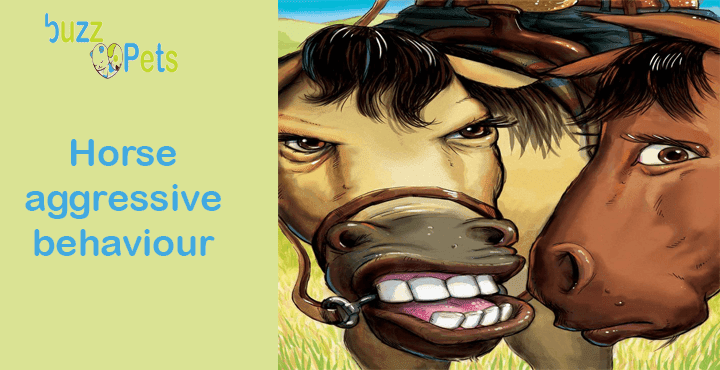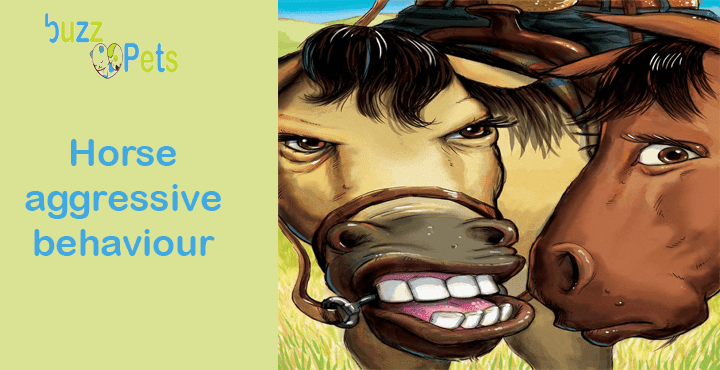The aggression of the horse under the saddle is dangerous not only for you, but also for those around you. In this article, we’ll look at the most common causes of this behavior and offer several solutions.
The root of the problem
Aggression under the saddle, like any unwanted behavior in a horse, has many causes. We always consider pain or discomfort to be the most important reasons. To analyze the problem in more detail, you must be 100% sure that the horse is not in pain.
Although horses are prey that can hide the presence of a problem and endure pain for as long as possible, not all really will. It all depends on the characteristics of the horse and the severity of the problem.
For example: the most common case in rental horses is back pain, horses may not manifest until the problem is aggravated and it is impossible to go unnoticed.
Do not neglect regular veterinary checks, it will be quite difficult to correct unwanted behavior caused by painful sensations even when the source of discomfort is eliminated.
It’s no secret that there are naturally aggressive horses. Aggression can be inherent in both stallions and mares, geldings, of any breed and of any age. In general, stallions are more aggressive. It’s in their nature.
By launching a stallion, testosterone levels drop, and with it the urge to dominate. Many cases of aggression in stallions can be corrected by fusion. But it is not a panacea for all ills. Mares are also more aggressive than geldings. It is the mares who are responsible for the order in the herd and for the rearing of the young animals.
Young horses, by the way, are also quite aggressive. Thus, they probe the limits in interacting with a person and at this point it is essential to let the horse know that you are a leader and that he is a follower.
Aggression can be caused by improper handling of the horse and illiterate training. Horses, by themselves, were not born with the desire to pounce on people. They are not aggressive towards humans by nature. There are, of course, exceptions.
There are cases of horses born with an unstable mentality and serious aggression problems, for example caused by irresponsible and indiscriminate breeding. That’s why it’s very important under no circumstances to allow aggressive stallions and mares to breed!
Illiterate training is a common cause of all unwanted horse behavior. If a person is afraid of a horse, not punishing them for showing aggression, but allowing them to dominate over and over again, they will increase their position in your herd hierarchy with them in this way.
The same goes for working under the saddle. If the rider is not confident in himself and in his abilities, he allows the horse to “scare himself” with stuffed ears, little goats, half-candles. As with interaction on the ground, this is how the horse probes the limits, starting with minor controls that are aggravated if not eradicated in time.
Variants of aggressive behavior
The most popular manifestation of an aggressive attitude is that of plugged ears. Raten horses showing reluctance to do anything or chase an inferior horse. By flattening its ears in response to human actions, the horse is warning that if you don’t stop doing what you are doing, it will hit or bite.
This behavior must be stopped immediately, as a horse that has a habit of swinging towards a person is dangerous. Horses may place their ears under the saddle in response to the rider’s command.
By eliminating the possibility that something is injuring the horse or that the equipment is causing discomfort, you get the reason for the aggression – the refusal to follow commands and move. Curing this can be done through competent and systematic work.
Chattering or biting teeth is the next step after blocked ears. This also includes teeth grinding during labor. If you were into rental, you probably had horses in your stable that scared those who walked by the stall with an open mouth and a rat. This behavior is much worse if the ears are blocked, because one day a horse can still bite someone who walks by his stall.
Aggression under the saddle, like any unwanted behavior in a horse, has many causes. We always consider pain or discomfort to be the most important reasons. To analyze the problem in more detail, you must be 100% sure that the horse is not in pain.
Although horses are prey that can hide the presence of a problem and endure pain for as long as possible, not all really will. It all depends on the characteristics of the horse and the severity of the problem.
For example: the most common case in rental horses is back pain, horses may not manifest until the problem is aggravated and it is impossible to go unnoticed.
Do not neglect regular veterinary checks, it will be quite difficult to correct unwanted behavior caused by painful sensations even when the source of discomfort is eliminated.
It’s no secret that there are naturally aggressive horses. Aggression can be inherent in both stallions and mares, geldings, of any breed and of any age. In general, stallions are more aggressive. It’s in their nature.
By launching a stallion, testosterone levels drop, and with it the urge to dominate. Many cases of aggression in stallions can be corrected by fusion. But it is not a panacea for all ills. Mares are also more aggressive than geldings. It is the mares who are responsible for the order in the herd and for the rearing of the young animals.
Young horses, by the way, are also quite aggressive. Thus, they probe the limits in interacting with a person and at this point it is essential to let the horse know that you are a leader and that he is a follower.
Aggression can be caused by improper handling of the horse and illiterate training. Horses, by themselves, were not born with the desire to pounce on people. They are not aggressive towards humans by nature. There are, of course, exceptions.
There are cases of horses born with an unstable mentality and serious aggression problems, for example caused by irresponsible and indiscriminate breeding. That’s why it’s very important under no circumstances to allow aggressive stallions and mares to breed!
Illiterate training is a common cause of all unwanted horse behavior. If a person is afraid of a horse, not punishing them for showing aggression, but allowing them to dominate over and over again, they will increase their position in your herd hierarchy with them in this way.
The same goes for working under the saddle. If the rider is not confident in himself and in his abilities, he allows the horse to “scare himself” with stuffed ears, little goats, half-candles. As with interaction on the ground, this is how the horse probes the limits, starting with minor controls that are aggravated if not eradicated in time.
Variants of aggressive behavior
The most popular manifestation of an aggressive attitude is that of plugged ears. Raten horses showing reluctance to do anything or chase an inferior horse. By flattening its ears in response to human actions, the horse is warning that if you don’t stop doing what you are doing, it will hit or bite.
This behavior must be stopped immediately, as a horse that has a habit of swinging towards a person is dangerous. Horses may place their ears under the saddle in response to the rider’s command.
By eliminating the possibility that something is injuring the horse or that the equipment is causing discomfort, you get the reason for the aggression – the refusal to follow commands and move. Curing this can be done through competent and systematic work.
Chattering or biting teeth is the next step after blocked ears. This also includes teeth grinding during labor. If you were into rental, you probably had horses in your stable that scared those who walked by the stall with an open mouth and a rat. This behavior is much worse if the ears are blocked, because one day a horse can still bite someone who walks by his stall.


